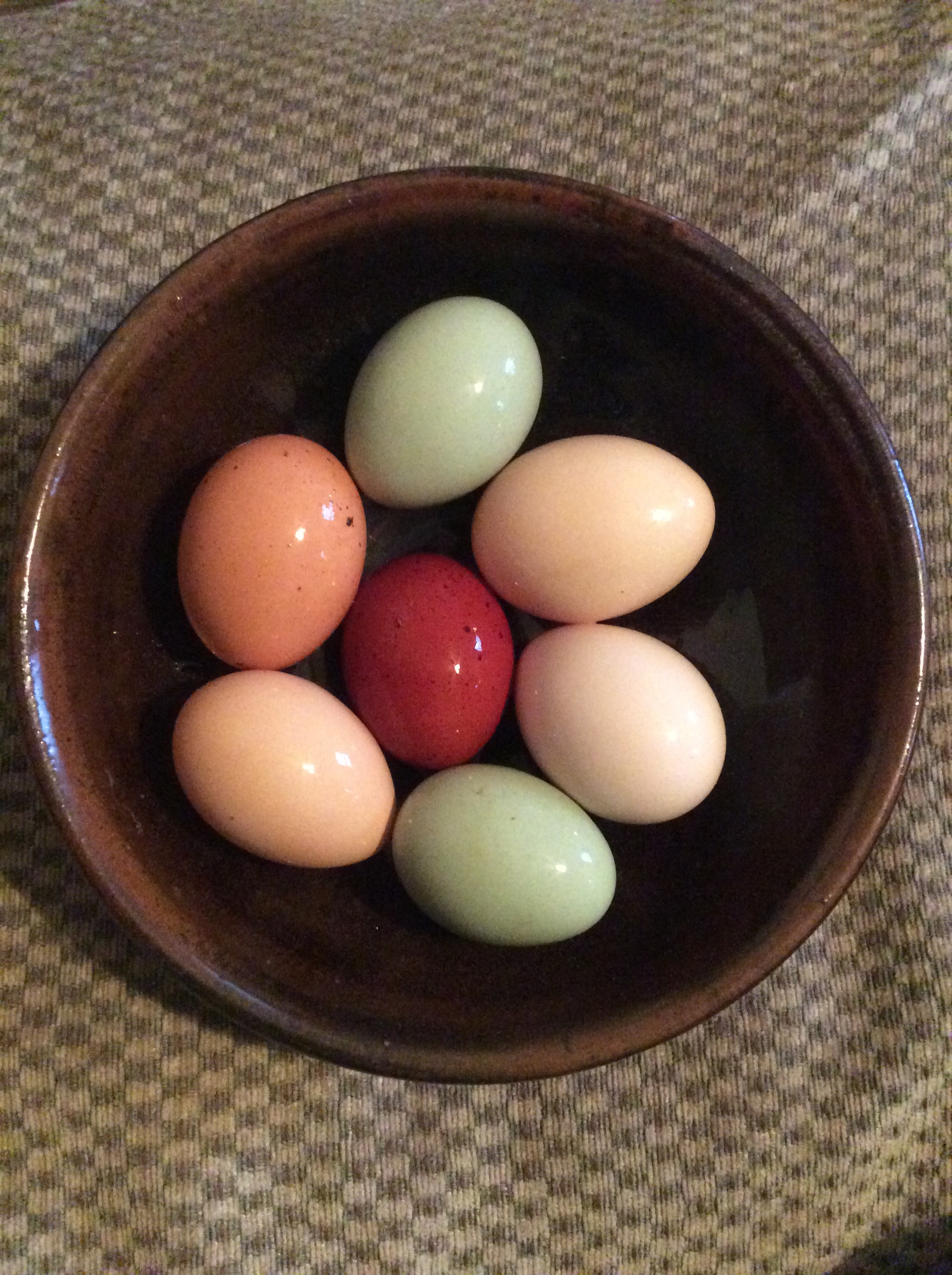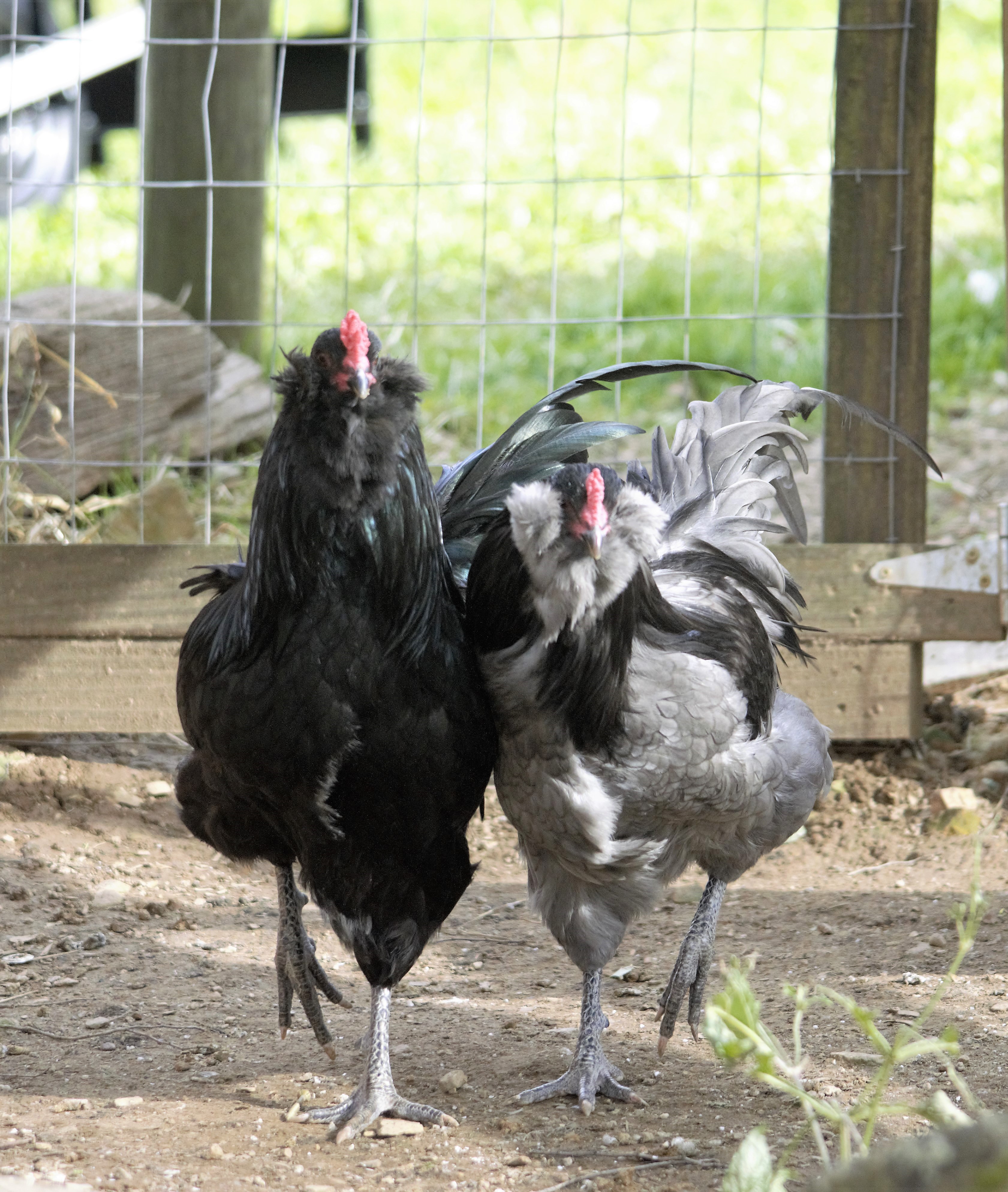
Today is a slushy, cold, wet day in the mountains of West Virginia! It’s a day where we’ve seen rain, sleet, and mushy snow falling, as well as a weak sunshine hours ago. I think they call it “winter mix.” It’s a great day to sit inside and write a blog post about chickens!
As unwelcoming as the weather was this morning, Scott went out (faithful man that he is) to feed and water and found our first Ameraucana eggs! We’ve been raising these girls since March of 2017, and hadn’t seen a single egg yet. Part of that was that the days got short just as they should have come into lay, and none of our 25 laying hens was giving us a single egg. It’s healthy for the mature hens to get a laying break right after they molt, but the pullets didn’t really need one.
Two weeks ago, we put on lights, and the eggs have been coming back slowly. Interestingly, first it was a mix of mature and pullet Light Sussex eggs, in various shades of pink and tan. Then came the Black Copper Marans’ dark chocolate eggs—pullet size only. And now, we see the first Ameraucana eggs—blue green and quite large for pullet eggs, which leads me to suspect that they either did, or could have, laid earlier in the year if the lights had been right.
We do so love having a colorful mix of eggs in our basket. We love also the insides: free ranging layers lead to dark orange yolks and freshness unparalleled by what we can buy in the store. (I know, because we’ve been buying eggs through the fall before we turned on the lights.)



 When there is no blue gene present in the pair, any black markings will be normally colored (i.e. they will appear black)
When there is no blue gene present in the pair, any black markings will be normally colored (i.e. they will appear black)